Finding sources and scholarship on Tolkien’s Elf-Horses is surprisingly not easy. There’s ample discussion of the horses of Rohan, and with the first season of Rings of Power in the can, the horses of Númenor are getting some time in the sun. But Elf-horses haven’t had nearly as much attention.
That’s a little surprising because in The Lord of the Rings, after a nice cast of ponies including Sam’s beloved Bill and Tom Bombadil’s Fatty Lumpkin, the first named equine we see is Glorfindel’s Asfaloth.
Asfaloth is a white horse, in contrast to the nameless black horses of the Black Riders. He seems to share his rider’s propensity for casting light in dark places. He’s lightning fast and very smooth; even seriously wounded and half into wraithdom, Frodo is able to cling to his saddle until he’s been carried safely away from his pursuers. He also seems to understand Elvish: when Glorfindel cries out to him to Giddyap! Go Faster! (Noro lim! Noro lim, Asfaloth!), he obediently does.
Once he’s done his job of saving Frodo, he vanishes from the books. The rest of the horses we’ll meet consist of the horses of Rohan, including the Mearas, and various and sundry cavalry mounts, plus Aragorn’s own horse from the North, Roheryn. Roheryn, like his rider, looks rough but has great courage and endurance.
So who is Asfaloth and where does he come from? Is he a special breed unique to the Elves, or is he a mortal horse who happens to belong to Glorfindel and who has been imbued with some of his powers? For that matter, is he related to the Mearas? They’re the Númenoreans of horsekind, being longer-lived than ordinary horses, with unusual intelligence and enhanced physical attributes.
I am not a loremaster and have not read much past the basics—The Hobbit, LOTR, The Silmarillion—so I always welcome input from those more scholarly. The one thing I am sure of is that for Tolkien, horses mattered. They were integral to his world. Some of them had names and personalities and histories. They were important.
Therefore it doesn’t surprise me that a dive into various wiki-sources gave me the name of a horse of the Valar: Nahar, whom Oromë the Huntsman rode far back in the Elder Days. Horses existed all the way to the beginning, then. We don’t know where Nahar came from or whether he was immortal, but I’m going to speculate that he probably was.
If the Valar had horses, it makes sense to me that Elf-horses would have been descended from these. Then possibly there’s an Elros-and-Elrond situation that results in the Mearas. Elf-horses mating with mortal horses? Half-Elven offspring running in wild herds where the proto-Rohirrim come across them?
That might explain Eorl the Young’s horse Felaróf, and eventually Shadowfax. They are supposedly descended from the horse of Oromë, or from that line.
One comment on last week’s article made my fangirl’s heart leap with glee. Commenter ED observed: “As Eorl the Young & his riders skirted Lothlorien on their way to the Field of Celebrant the horses of the Eotheod appear to have received some sort of boost.” Considering the power of Galadriel’s ring and the general Elvish effect on all good beasts, that’s not surprising. I found a little more detail here:
In 2510, Eorl the Young led his Riders past Lothlorien on the way to the Battle of the Field of Celebrant. A white mist emanated from the forest to hide the Riders from the Shadow in Dol Guldur.
That’s a protective barrier for the whole army rather than an enhancement to the horses’ speed or strength, but I like ED’s version. Especially since my head canon has been greatly assisted by the horsegirl elements of The Rings of Power. I was pleased to be corrected on a particular point by commenter Tar-Elenion, who pointed out that while Númenoreans did not use cavalry in war, they were indeed horse breeders and they valued their horses highly. Isildur’s deep bond with Berek is right there in canon, in the Unfinished Tales.
So are those horses of the Valar or by extension Elf-horses? Considering how many gifts the Valar gave to the Edain who settled on the island, that wouldn’t surprise me. It’s very Tolkienian for an island kingdom to be supplied with horses of exceptional intelligence and a tropism toward bonding with humans, and for them to be the main mode of transport within the kingdom.
Buy the Book
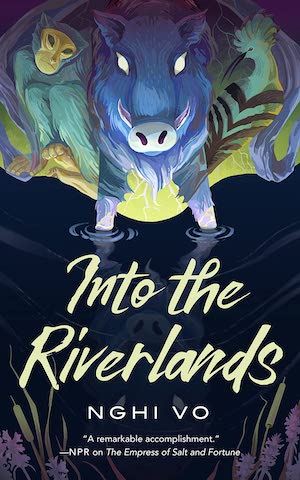

Into the Riverlands
It’s also very European. Real-world horse breeds of the continent, especially the horses of Iberia and their cousins and descendants, have traits very much like this. They live long, have exceptional endurance as well as beauty and grace, and understand the speech of Men.
Which brings me to Galadriel’s horse in the series. When I first saw the teasers, I thought it had to be an Elf-horse. Galadriel is riding him, after all, and his coloring is so unusual and his beauty so extreme. He must have come from one of the herds of the Elves.
I was surprised when the series aired, that he apparently is a horse of Númenor, possibly from the royal stables. Or else he belongs to Elendil’s family, though their other horses are much more traditional in their coloring: Elendil’s black Friesian (you can always spot those; they’re the ones with flowing leg feathers) or Isildur’s bay Berek. When the Impossible Cavalry thunder across the fields of Middle-Earth, they’re a pretty traditional mix of colors including Miriel’s lovely grey. But then there’s Galadriel’s blue-eyed pale-pink horse.
I’m waiting to learn more about him. So far we’ve been told that his name is Titan. He’s the best horse in the whole herd, according to Morfydd Clark, and she adores him. She rides him whenever she possibly can. Riding him, she says, is an incredible experience.
That sounds an awful lot like what we know of Elf-horses. Titan is a very unusual color, what’s known as a double-dilute cream. Hence the not quite white coat and the blue eyes. He also happens to be an exceptionally well put together animal (which is not always the case with horses bred for color), and it’s clear he has temperament to match. I’m happy to incorporate him into my head-canon as an exemplar of the Elf-horse.
As long as I’m in my head creating canon, I can see Galadriel being taken to the stables. Elendil has his own horse, of course. But there’s the one down the aisle, the pale head over the stall door, turning to watch her. Since he’s a horse of Númenor and therefore wiser than most (and horses are extremely wise), he knows what she is. He can see how she appears on the Other Side.
That’s when the click happens. Horse people know it well. Horse and rider meet, and know: they’re a match. Since this is Númenor and horses are accustomed to bonding with their humans, this horse knows what’s happening.
I’m sure Galadriel does, too. One of the other named horses in canon is Rochallor, the horse of her uncle the High King Fingolfin. Maybe she’s always wanted a horse who loved her as much as Rochallor loved her uncle. Maybe this is the one. Since it’s head-canon, I like to believe it is.
Judith Tarr is a lifelong horse person. She supports her habit by writing works of fantasy and science fiction as well as historical novels, many of which have been published as ebooks. She’s written a primer for writers who want to write about horses: Writing Horses: The Fine Art of Getting It Right. She lives near Tucson, Arizona with a herd of Lipizzans, a clowder of cats, and a blue-eyed dog.










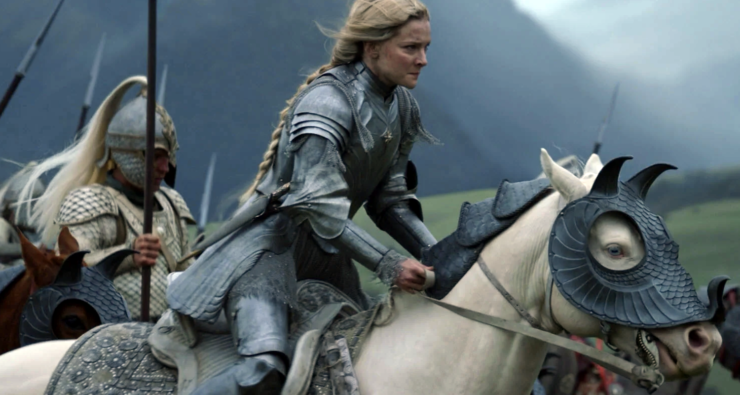
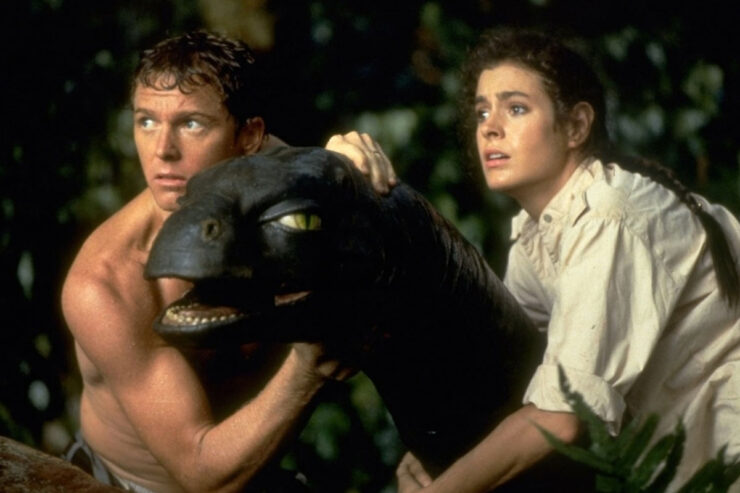

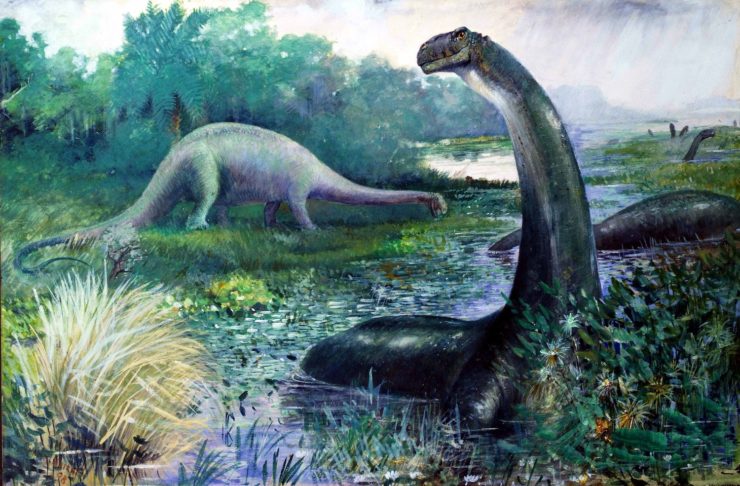
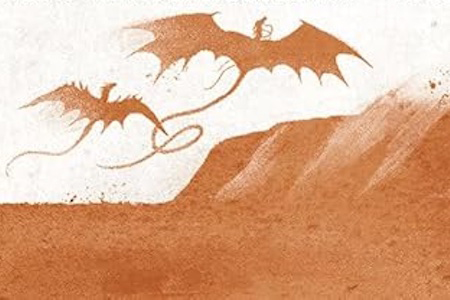
Correction: Galadriel’s father is Finarfin, not Fingolfin. Fingolfin would be her uncle.
@1 Thank you. Still. Family. Am I right that she is of the House of Fingolfin?
No, she’s of the House of Finarfin. Each son of Finwe has his own capital-H House.
Can we tag Jeff LaSala in for some expert Tolkien commentary?
Did Glorfindel ride Asfaloth in Valinor and does the horse shine shine because he’d seen the light of the Two Trees?
I had the impression that Elves did a lot of walking in the days before the Sun and Moon. I don’t think they needed to ride anywhere in Valinor.
Finarfin/Fingolfin section updated–thanks, and sorry for the confusion!
Finarfin and Fingolfin are brothers, so more accurately they would both be of the House of Finwe (ETA because I also apparently can’t keep the names straight lol)
But lovely article nonetheless :)
@Judith Tarr, I’m glad to have been able to point you towards something you seem to have enjoyed so much (and can only apologise for not having been able to give a more precise recollection): I’m also delighted to see you invoke the name of Peerless Rochallor, the Mightiest Steed in the History of Middle-Earth.*
Now I’m beginning to wonder if Lady Aredhel, daughter to King Fingolfin, simply HAD to leave Gondolin (though it led, by a long and twisted road, to her death) because she could no longer resist the powerful Horse-People genes passed down from her father …
*All credit to Shadowfax, Roheryn and those other fine creatures but did any of them carry their master through the Battle of Sudden Flame (Orcs, Balrogs, Dragon-fire and ruin, oh my!), canter right up to the very Gates of Morgoth, wait through King Fingolfin’s fatal duel with The Enemy himself, then cheat the jaws of the very wolves of Morgoth to gallop their way home?
It took a broken heart to kill that horse because once he got running only Death could catch up to him.
@6. Lisamarie: My understanding is that Feanor, Fingolfin & Finarfin (not to mention their descendants) all belong to the House of Finwë (on a good day Feanor might even call his siblings “brother” rather than “half brother” or “oh, you“), who was the first High King of the Noldor (Finrod Felagund being son of Finarfin and grandson of Finwë, not to mention having left no descendants of his own*).
*Though I’ve long assumed that Gil-galad was his heir-presumptive at some point, as a tribute to his having briefly been the son of Finrod (with Lady Galadriel as his own sister!) in a working draft: personally I favour the version of things that makes Gil-Galad the first High King to be born in Middle-Earth, the son of a Noldorin father by a Sindarin mother.
This is the sort of discussion I get into regarding horse pedigrees. I love it. “No, not that Pluto Theodorosta! (long discussion of birthdates, birthplaces, and studbook annotations)”
According to Unfinished Tales, the Númenóreans’ horses did come from Valinor, but they didn’t bring them to Middle-earth, at least not in their wars. Note #7 for “The Disaster of the Gladden Fields”:
Of course, this leaves open the possibility that Elendil might have brought Númenórean horses with him after the Downfall.
@10 I would think Elendil would have tried to bring horses with him, if they were so loved (and I’m sure the show will do that since they’ve already built him up as a Horse Girl).
What comes out of all this is that there are horses in Valinor. It follows that Elf-horses would be of that lineage.
Has anything ever been said about the horses that the Nazgul rode? How could they stand their riders?
Serious question. It’s something that I’ve wondered about for a long time, and this seems the likeliest place to get an answer.
Ah! I’ve found a passage from the Silmarillion which explicitly says the Elves had horses from Valinor. This is from Chapter 14, “Of Beleriand and its Realms”:
Gandalf says it’s because the Nazgul horses were bred in Mordor by servants of Sauron (in FOTR “Many Meetings”).
Presumably they were habituated from an early age to the presence of the Nazgul?
@14 – Thanks – must have missed that.
@13 My horse breeder’s heart loves this. Horses in human terms breed slowly–gestation is 340 days or so–but for Elves, that’s the blink of an eye. A long year (144 calendar years, for them as is wondering) adds up to quite a few horse generations, even if the horses are as long-lived as the horses of Valinor must be.
@12 and 14 That would make sense. Horses trained to hunt major predators are habituated that way. If they’ve been bred over a long period–figuring how many centuries it’s been since the Nine were given to their wearers–that would make them even more likely to be tolerant of extreme evil. Horses that couldn’t stand it would be culled. Eventually they might not need a whole lot of habituation; they’d be born with whatever filters a horse would need in order to carry a wraith.
I wonder if Ringwraiths have weight? Horses would feel the force of their evil and submit to it, but would there be any poundage in those saddles?
Does this distinguish European from non-European horse breeds? I know there is such a thing as selective breeding, but it does sound a bit odd.
@15 No.
Tolkien writes of times of Heroes, Legends and Warriors. In those etimes, just as there are swords and other weapons of great pedigree and special power, particularly valued and given Names, so the Heroes and Warriors have special horses with pedigrees and Names. It’s all there in the medieval Romances — as of course the author of this piece knows most well, so she’s not being informed here by me of anything. It’s just another of the many deep understandings of his sources and inspirations that Tolkien possessed, which inspires me still with deep admiration.
So many names for ‘horse’ in Old English. Of course, we have the two Germanic settlers of yore to Britain, the brethren, ‘Hengist and Horsa’, both meaning horse. And we have many more:
(nominative definite articles: se – masculine, seo – feminine, þæt – neuter, þá – all genders plurals (which remained as ‘the’ into ModE)
þæt horse
þæt blanca – white or grey horse (from the Latin)
se eoh – horse; steed
se friþhengest – stately horse or horse of frith/peace. An ielfen/elven name for a horse methinks
se hengst – horse; stallion; steed; gelding
se mearh – horse; steed
se mīere – mare (note this name retains the masculine se article instead of the feminine seo one)
þæt onrid – riding horse
þæt rádhors – ridehorse, saddle horse
se sceám – (sheám) a white horse (maybe)
se stéda – horse, stallion, whole horse or camel – steed
hnægan – v. to neigh. ‘g’ makes typically a ye sound in OE
stridan – v. to mount a horse – Strider
gehorsian – v. (love this one) to horse, to set or mount on a horse, to supply with a horse
source: https://www.oldenglishtranslator.co.uk/ entering ‘horse’ as the gloss into Old English

@20 Tolkien would love your comment so much.
@20:
Re Hengest and Horsa: It’s been pointed out that the Shire was first settled by two brothers named Marcho and Blanco. Marcho’s name seems to come from mearh, and Blanco’s from blanca, a word from Beowulf meaning “white horse!” So Tolkien obviously had some early English history in mind.
I’m sure ancestry helps, but I bet elves could raise superb horses from whatever stock they got. Tolkien paints elves as masters of technology; when they make bread, it’s bread, when they make rope, it’s rope. Other folk call the results magic, which they deny.
I am glad that you are writing more about horses. Your love of them really shines through.
I’m not quite sure how I got from this to Damon Runyon’s Broadway story “Princess O’Hara”, but, to lower the tone, she’s driver of one of those antique horse carriages in central New York (and hyperbolically pretty herself), when the old horse goes down sick. To her surprise, some rather criminally minded friends borrow another horse for her to use… from the race track. A critter of quite a different class. Which turns out lucky.
When it comes to Elves and horses, someone already posted the quote from the Silmarillion regarding how the Noldor brougth in their horses from Aman, the Undying Lands, which is sensible, as they already started their horse breeding already there no doubt. One can also here explore the whole aspect of Elves “talking to animals” their natural ways with them and so bond with the horses and fashion of riding, the “elf-fashion riding” without saddle even even though the Elves did at times use saddles and harness:
“‘I did not know you rode bare-back, Gandalf,’ [Pippin] said. ‘You haven’t a saddle or a bridle!’
‘I do not ride elf-fashion, except on Shadowfax,’ said Gandalf. ‘But Shadowfax will have no harness. You do not ride Shadowfax: he is willing to carry you — or not. If he is willing, that is enough. It is then his business to see that you remain on his back, unless you jump off into the air.'” The Two Towers, LoTR Book 3, Ch 11, The Palantír
Legolas demonstrates this further:
“A smaller and lighter horse, but restive and fiery, was brought to Legolas. Arod was his name. But Legolas asked them to take off saddle and rein. ‘I need them not,’ he said, and leaped lightly up, and to their wonder Arod was tame and willing beneath him, moving here and there with but a spoken word: such was the elvish way with all good beasts.”
Yet obviously we know of Glorfindel’s horse having harness and saddle:
“Suddenly into view below came a white horse, gleaming in the shadows, running swiftly. In the dusk its headstall flickered and flashed, as if it were studded with gems like living stars. The rider’s cloak streamed behind him, and his hood was thrown back; his golden hair flowed shimmering in the wind of his speed. To Frodo it appeared that a white light was shining through the form and raiment of the rider, as if through a thin veil.”/”‘You shall ride my horse,’ said Glorfindel. ‘I will shorten the stirrups up to the saddle-skirts, and you must sit as tight as you can. But you need not fear: my horse will not let any rider fall that I command him to bear. His pace is light and smooth; and if danger presses too near, he will bear you away with a speed that even the black steeds of the enemy cannot rival.'”
…
“I could, I suppose, answer: ‘a trick-cyclist can ride a bicycle with handle-bars!’ But actually bridle was casually and carelessly used for what I suppose should have been called a headstall. Or rather, since bit was added long ago . . . I had not considered the natural ways of elves with animals. Glorfindel’s horse would have an ornamental headstall, carrying a plume, and with the straps studded with jewels and small bells; but Glor. would certainly not use a bit. I will change bridle and bit to headstall”
Elves would have definitely lots of horses in Aman and then as they brought some of them to Middle-earth the elven horses at least in families and lands of the Exiles would probably have high lineage themselves. The local Elves, like say Wood Elves of Mirkwood or other places where they managed to have some horses or use of them, they would probably use the wild horses of Middle-earth lands that they ‘tamed’ for themselves.